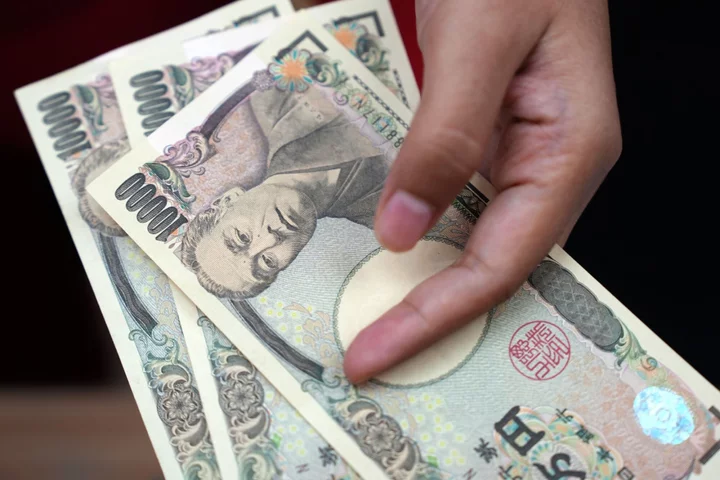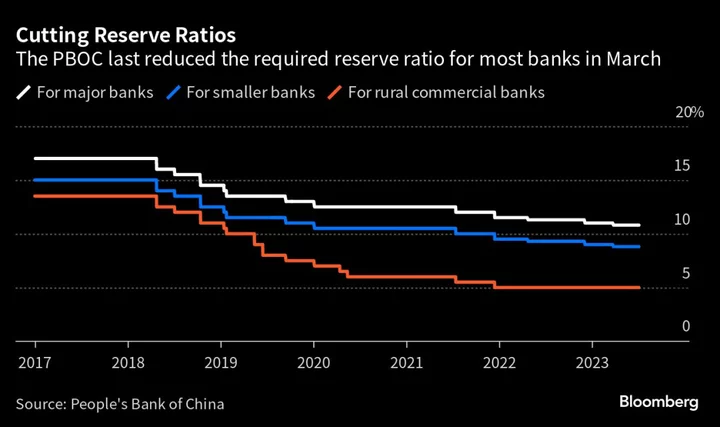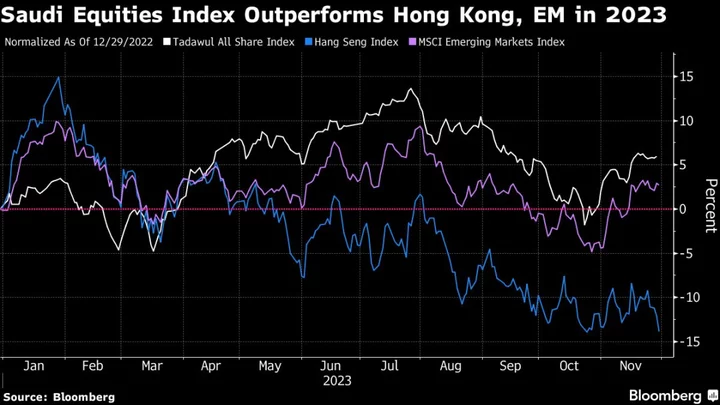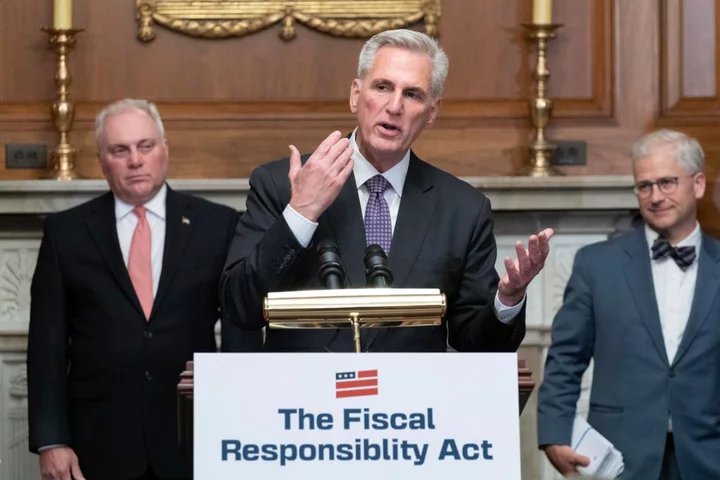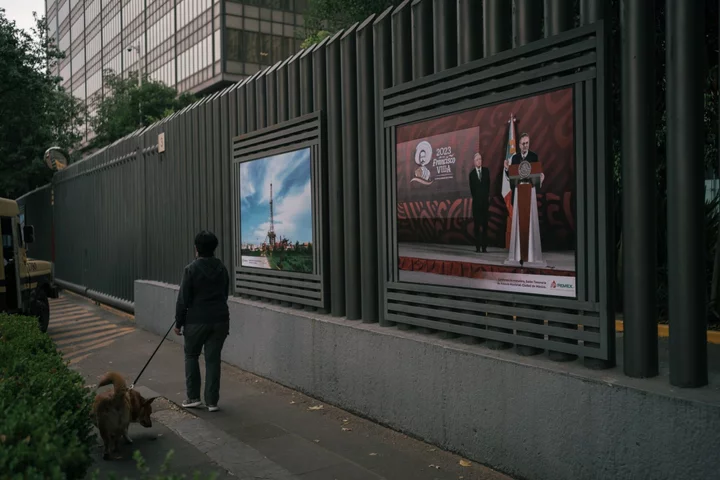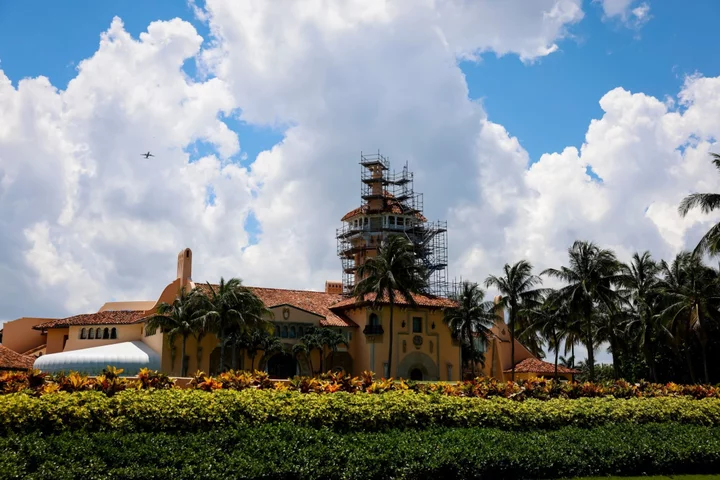The yen briefly weakened beyond 150 against the dollar again as the wide yield gap between Japan and the US continues to weigh on this year’s worst-performing major currency.
It touched 150.11 per the greenback in early Asian trading on Monday before quickly recovering amid weight from options-related dollar selling and suggestions of algorithmic transactions. It was little changed at 149.87 at 11:30 a.m. in Tokyo.
Traders are wary of betting on further depreciation given the risk of intervention from authorities in Japan. Finance Minister Shunichi Suzuki said last week that it is important to have stability in foreign exchange markets and for them to reflect fundamentals.
“Dollar-yen broke the 150 line during hours with low liquidity and less participants, probably led by speculators,” said Yukio Ishizuki, senior currency strategist at Daiwa Securities Co. in Tokyo. “The topside of the currency pair is likely to become heavier in the Tokyo trading hours amid growing concerns about intervention, especially above the 150 line. People will continue to stay nervous.”
The yen’s rapid recovery from above 150 also showed signs of being “triggered by algorithm transactions that were automatically executed due to intervention concerns,” said Fukuhiro Ezawa, head of financial markets in Tokyo at Standard Chartered Bank.
The wide interest rate divide with the US is seen in the Treasury 10-year yield at 4.96%, which is almost six times that of Japan’s equivalent at 0.835%. The divergence in monetary settings is fueling the gap and Bank of Japan Governor Kazuo Ueda said Friday that the BOJ will continue patiently to keep settings accommodative in order to achieve the goal of stable and sustainable 2% inflation.
Traders are on tenterhooks with a BOJ policy meeting approaching on Oct. 30-31, and tensions in the Middle East increasing uncertainty in global markets.
Investors are also digesting a Nikkei report that BOJ officials are pondering the question of whether to tweak yield-curve control program as domestic long-term interest rates float higher in tandem with those in the US. It didn’t say where it obtained the information.
“If the BOJ wants to see a stronger yen, I think they will need to do more than just widen the band yet again,” Rodrigo Catril, currency strategist at National Australia Bank in Sydney, said of the YCC program. “The market is right to be cautious.”
A tweak to the BOJ’s ultra-loose monetary policy this month could propel the yen to 145 against the dollar if the central bank also flags that a rise in interest rates is coming, according to RBC BlueBay Asset Management.
The central bank is likely to unwind its unusual policy of sub-zero rates during the first half of 2024, according to the majority of 315 respondents in a Bloomberg Markets Live Pulse survey.
Yet until Monday, the yen had hovered just below 150 per dollar since it went to 150.16 on Oct. 3. That move suddenly reversed, with it recovering to 147.43, stoking speculation that Japan had entered the market to prop up the currency. Senior government officials stuck to a strategy of keeping investors guessing on the following day by declining to clarify whether they had intervened.
Japan spent around ¥9 trillion ($60 billion) in September and October last year across three occasions in their first intervention to support the yen since 1998. This year the currency has weakened more than 12% against the dollar, making it the worst performer among its Group-of-10 peers.
Japan’s chief currency official Masato Kanda has said that as a general principle, rate hikes and interventions are ways to respond to excessive currency moves. He has vowed to take action if needed against excessive swings, but declined to say whether recent market moves were speculative.
Still, the International Monetary Fund has said that it sees no factors that would compel Japan to intervene in the foreign exchange market to support the yen.
--With assistance from Saburo Funabiki, Matthew Burgess and Daisuke Sakai.
(Updates with another strategist comment and latest price moves.)
Author: Yumi Teso and Michael G. Wilson

